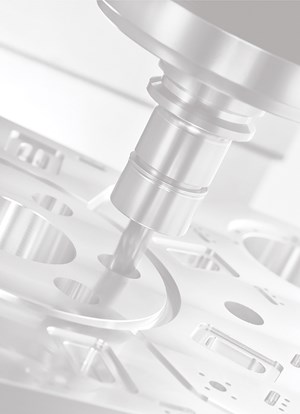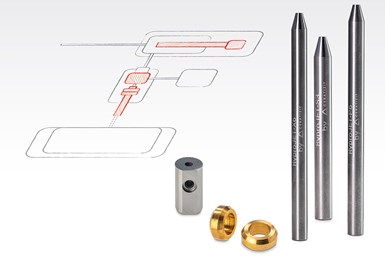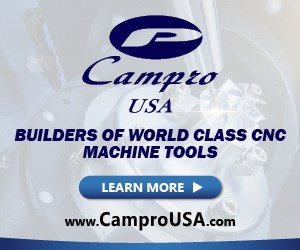Ceratizit Waterjet Nozzles Cut Difficult Materials
The HyproJet range features three standard waterjet nozzles designed to provide narrow hole tolerances, optimized cutting and radial run-out accuracy.
Share


Ceratizit’s HyproJet portfolio of waterjet cutting nozzles feature cutting heads designed to direct a fine jet of water at high pressure of up to 6,000 bar with a jet diameter of 0.38-1.02 mm.
The HyproJet range was developed with three standard waterjet nozzles to provide narrow hole tolerances, optimized cutting and radial run-out accuracy. The HyproJet X6 features improved flow of abrasive materials, air in the nozzle and a special design for cutting difficult materials. For standard applications, the HyproJet P6 and P3 are designed as cost-effective solutions. All nozzles are suitable for modern cutting head systems and support automatic centering during assembly.
The HyproJet system mixes abrasives, such as garnet or corundum, into the waterjet for demanding materials such as steel, stone, glass or composites. Mathieu Schellenberger, project manager in product development at Ceratizit, says, “[Abrasives] put a lot of strain on the focusing tubes due to erosion. Therefore, when redesigning the HyproJet products, we further improved the wear protection.”
Special carbide grades were used in the nozzle, enabling HyproJet nozzles to last for a long time even at pressures of up to 6,000 bar, as well as achieve high cutting qualities.
Related Content
-
4 Commonly Misapplied CNC Features
Misapplication of these important CNC features will result in wasted time, wasted or duplicated effort and/or wasted material.
-
4 Tips for Staying Profitable in the Face of Change
After more than 40 years in business, this shop has learned how to adapt to stay profitable.
-
A History of Precision: The Invention and Evolution of Swiss-Style Machining
In the late 1800s, a new technology — Swiss-type machines — emerged to serve Switzerland’s growing watchmaking industry. Today, Swiss-machined parts are ubiquitous, and there’s a good reason for that: No other machining technology can produce tiny, complex components more efficiently or at higher quality.
.png;maxWidth=728;quality=90)















-02.jpg;maxWidth=300;quality=90)




